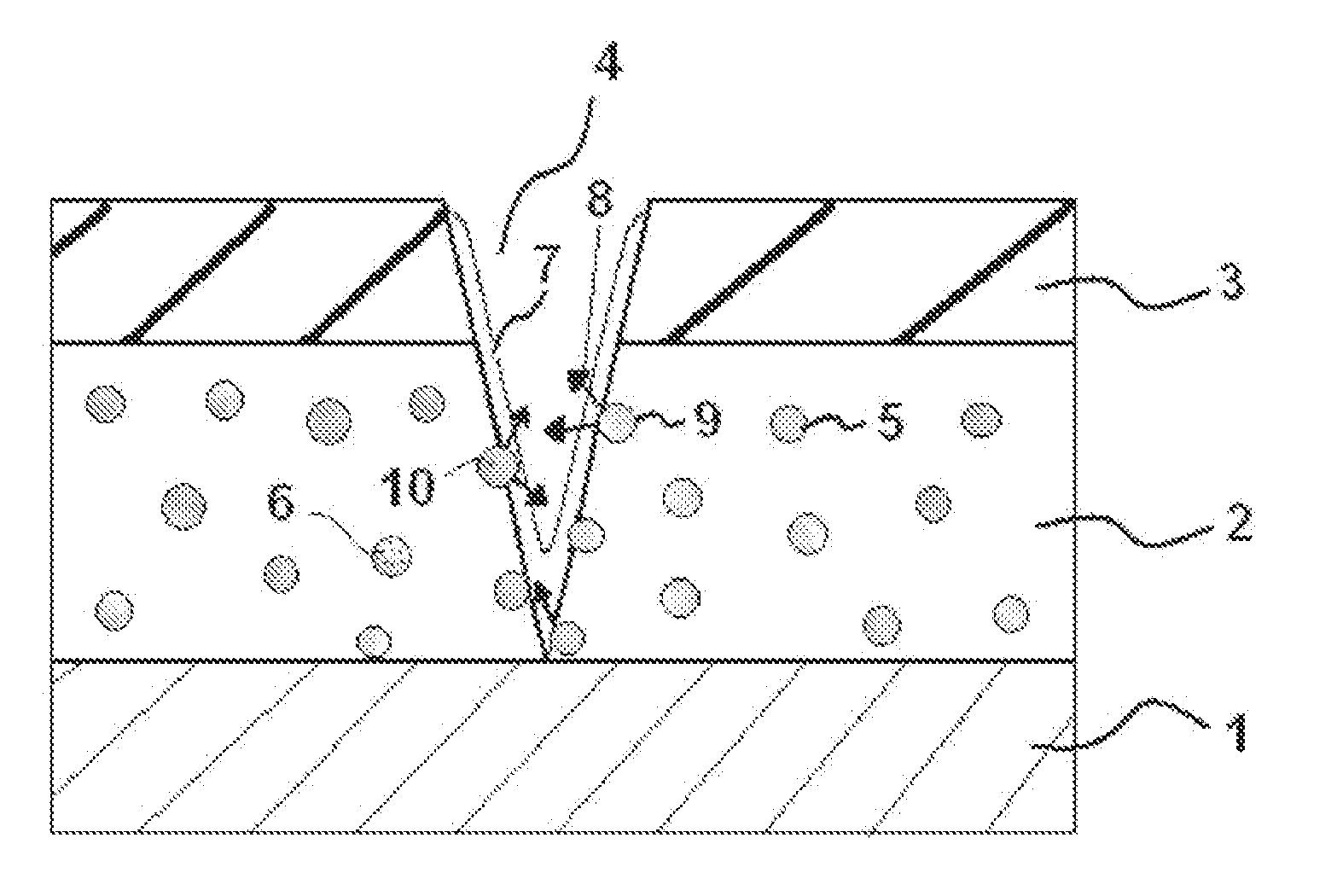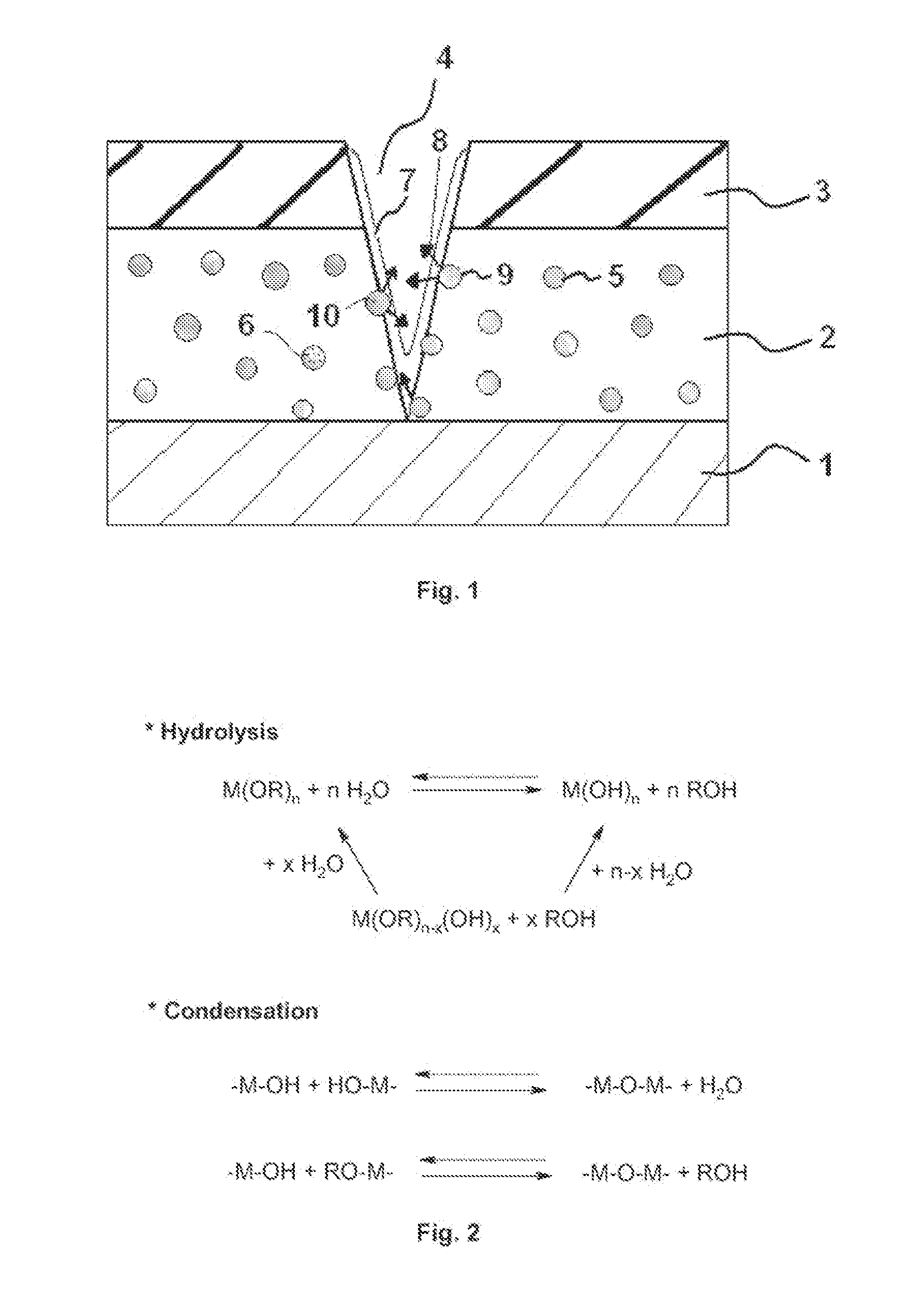Ceramic particles and coating compositions including said particles
a technology of ceramic particles and coating compositions, applied in the field of coating compositions, can solve the problems of environmental safety hazards, long-term corrosion protection, and important damage to the aircraft structure, and achieve the effect of stable release profile of inhibitors
- Summary
- Abstract
- Description
- Claims
- Application Information
AI Technical Summary
Benefits of technology
Problems solved by technology
Method used
Image
Examples
example i
Synthesis of an Organic-Inorganic Sol-Gel Matrix
[0090]48 g of glacial acetic acid were added under stirring to zirconium (IV) propoxide solution (105 g, 70% in 1-propanol). After slow addition of deionised water (602 g), the solution was stirred until homogeneous (1 hour). 245 g of 3-glycidoxypropyltrimethoxysilane (GPTMS) were then added and the solution was stirred for another hour. The resulting solution is called the sol-gel matrix solution in the following examples and is used as a representative coating solution.
example ii.1
Inorganic Inhibitor Encapsulation
[0091]A surfactant solution was prepared by mixing a surfactant NP-5 (160 mmol) and cyclohexane (800 mL). 17.28 mL of a solution of Ce(NO3)3 in water (80 mg / mL of Ce3+) was added into the surfactant solution, which was then stirred for 30 minutes to form a transparent water-in-oil microemulsion. Tetramethyl orthosilicate (TMOS, 144 mmol) was added to the above microemulsion which was then stirred for 10 minutes, before the addition of (3-Aminopropyl)triethoxysilane (APTES, 3.6 mmol). The synthesis was aged overnight (16-24 hours) at 30° C. After decreasing the temperature to 20° C., 960 mL of acetone was added into the mixture and stirred for 30 minutes to destabilise the emulsion. The mixture was then centrifuged for 25 minutes at 5000 rpm. The supernatant was decanted and the particles were collected. The particles were then either freeze-dried or suspended in a concentrated slurry, as required for the following step.
PUM
| Property | Measurement | Unit |
|---|---|---|
| Fraction | aaaaa | aaaaa |
| Fraction | aaaaa | aaaaa |
| Corrosion properties | aaaaa | aaaaa |
Abstract
Description
Claims
Application Information
 Login to View More
Login to View More - R&D
- Intellectual Property
- Life Sciences
- Materials
- Tech Scout
- Unparalleled Data Quality
- Higher Quality Content
- 60% Fewer Hallucinations
Browse by: Latest US Patents, China's latest patents, Technical Efficacy Thesaurus, Application Domain, Technology Topic, Popular Technical Reports.
© 2025 PatSnap. All rights reserved.Legal|Privacy policy|Modern Slavery Act Transparency Statement|Sitemap|About US| Contact US: help@patsnap.com


